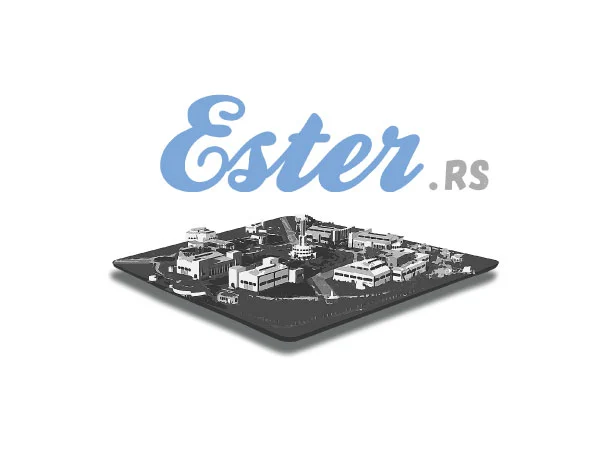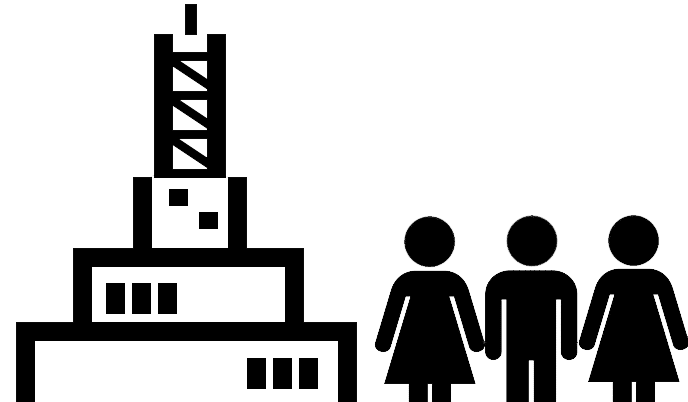What is Ester?
Ester is a collection of novels and a teaching material, its most important feature being a series of dramatized and illustrated stories about the Jewish victims killed in the Sajmište Concentration Camp (Judenlager Semlin) near Belgrade in the beginning of 1942. The stories focus on young victims and their families, their pre-war lives, and their lives under the German occupation and during the Holocaust. The stories are based on true historical events and the people who experienced them.
The stories are based on true historical events and the people who experienced them.
In the course of creating this program, experts from Serbia, Germany, the Netherlands and other countries were consulted, while a team consisting of expert historians, teachers, specialists on Jewish culture and tradition, Holocaust survivors, as well as a group of illustrators from Serbia and the Netherlands who were working together on its implementation.




Dramatization of History
The events depicted in the Ester novels are true, documented events corroborated by relevant historical sources, testimonies of survivors, witnesses, and other documentation. While creating the novels, one of the important goals was to find the correct balance between a certain degree of necessary liberty between the dramatization and the historical facts. Ester graphic novels were created as a reconstruction and dramatization of history based on available fragments of personal stories, keeping in mind a certain target and age group. Taking this approach, while keeping historical events and facts as central in the stories, we placed the main focus on the human aspects, feelings, and thoughts of the main characters, with the aim of engaging students on a different level by creating a purposeful tool for teaching and learning about the Holocaust. Particular segments of the stories were created specifically to better present the Jewish culture and traditions and the pre-war Jewish life in Serbia. In some cases we used experiences of several different individuals and families by blending them into one single story. For instance, it might have been another father who, just a few days before he was shot, gave his cap to his son during his son’s last visit to the Topovske Šupe Concentration Camp. But it is a matter of historical fact that there really was a father who did it. In order to present specific aspects or subjects, such as collaboration, resistance, helpers, refugees, looting of Jewish property, etc., some otherwise historically accurate details are implanted into the stories, usually by placing some of the main characters at a particular location and time. For instance, in one of the novels, one of the main characters is present during the Volksdeutsche march through central Belgrade in September 1941. We cannot know if this boy was there that day, but – he might have been. On the other hand, the event itself is a well-documented historical fact, and it was important to present it to the students. Having in mind the educational purpose of the novels, we believe that such adaptations were justified.
It is important to emphasize that all interventions and dramatizations were made in accordance with historical sources and under the supervision of expert historians in order not to jeopardize the crucial and important historical facts.
The Ester graphic novels are based on as much historical detail and information about the main characters of the stories as we could find and ascertain, and do not represent an attempt to tell their personal stories, but are a collection of different experiences and fates collected in a format that should serve the purpose of learning about The Holocaust.
In this way, we tried to offer material that will inspire students in a different, more emotionally engaging way, opening up the possibility for creative and research work. In a certain way, we were inspired by a whole series of works of different art forms that deal with this topic.
Among others, David Albahari describes his novel Götz and Meyer like this:
“The novel Götz and Meyer is based on historical facts from numerous sources, but it is still a story that respects the facts to the extent that it suits it, because by describing the suffering of one family in Serbia, I described the fate of the entire Jewish community in a symbolic way.”.
International team of experts
Ester was produced by an international team consisting of expert historians, teachers, experts for the Jewish culture and tradition, Holocaust survivors, as well as a group of illustrators from Serbia and the Netherlands were working together on its materialization.
A variety of opportunities for learning and research
The stories and illustrations are multi-layered, created with many details that can serve as a starting point for further research work, not only about historical events but also about other details of life before the Second World War, such as technology, culture, film, sports, fashion, and others elements of everyday life. In addition to following the main characters and their destinies, many other personalities appear in the stories, such as Hilda Dajč, Jewish refugees from Austria, members of the first Serbian jazz orchestra “Micky Jazz”, Julije Bauer – Yugoslav athlete and Olympian, and many others, whose lives can be the subject of special research assignments.
Na svakoj stranici prikazana je po jedna ilustracija, odnosno scena priče. Uz svaku scenu precizno su obeleženi tačan datum i lokacije na mapi. Na svakoj stranici su priložene istorijske fotografije i dokumenti, kao i zadaci za istraživački rad. Tamo gde je za to bilo potrebe dadata su i objašnjenja manje poznatih reči.
Methodology
Students can analyze illustrations and texts, researching alone or in groups, using historical newspaper archives, photographs and other historical materials. Another important work method is the comparison of illustrations representing the same locations (often the same personalities) but in different time periods, such as before and after the occupation. In addition, the material opens up a number of possibilities for working on historical sites. As an additional detail, the materials aim to introduce students to the professions of historians and archivists, and the basics of historical scientific research in general. You can read more about the pedagogical approach on the Methodology page.
Historical context
The introductory text offers a brief overview of the Holocaust in general, and the question of why we remember and learn about the Holocaust. The following section presents the history of the Belgrade Fair, the occupation of Serbia, and the camp at the Fair. The material is enriched with original maps and infographics. Also, as it was already mentioned that the material aims to promote the professions of historians and archivists, one part of the text is dedicated to research, historical material and the work of historians and archivists.
Parallel chronology
On the Chronology page, we offer two parallel historical overviews, one dedicated to National Socialism and anti-Semitism in Nazi Germany and the Holocaust in Europe, and the other focusing on occupation, suffering, resistance and the Holocaust in Serbia. In this way, a comparative monitoring of historical events in Serbia and Europe is offered, which enables a better understanding of the stories presented in the graphic novels, and puts the events in Serbia in a broader historical context of the war and the Holocaust in Europe.
We hope that the Ester collection will contribute to the memory and learning of the Holocaust, and provide additional motivation for nurturing the humanist and anti-fascist tradition in Serbia.
Teaching material
Illustrated stories
Graphic novels
True stories - Real people
Based on historical documentation
Learning through research
Learning on locations
Many possibilities for creative work
with the students
A short overview

Graphic novels about the Holocaust
based on real people and true events
The Dramatized stories about the suffering of the Jews in Serbia are based on real historical characters, true historical events, testimonies, historical documentation and material. An international team of experts worked together on creating the stories in order to preserve historical accuracy, the illustrations being a creation of an international team of artists.

Time, date and Location on a Map
marked with a precision added to every scene and illustration
Time, date and location, precisely marked on a map are added to every scene, which allows following the plot on the enclosed maps, too. A parallel timelines of historical events both in Europe and in Serbia are also available, which gives an opportunity of following events in Germany and Europe where the war broke out and in Serbia, respectively. It helps us to understand better the historical context of the stories, as well as to follow the events that are happening simultaneously at the other locations.

Historical Documentation
photographs, historical newspapers, documents
Among additional materials there are historical photographs, as well as the other documentation and archival material, which reconstructed scenes and events presented in a story are based on. Students’ tasks suggest use of the historical newspapers available in a digital form on the websites of the National Library of Serbia and the University Library “Svetozar Marković“in Belgrade.

Investigating tasks
from the Jewish culture to the topics related to sport and fashion
A range of investigating tasks is prepared for students to work on individually, or in a group. Tasks open various possibilities of approaching the subject matter by analysing various topics referring to the historical period and the events which are presented in the stories: ranging from the topics referring to analysing the Jewish culture and tradition, historical characters and events to the topics referring to art, sport, technology, fashion, music, culture, comics etc.

Various Formats
projection on a big screen, online use, iPad/tablet format, PDF or printed
The teaching material is prepared in such way as to be projected in a form of digital presentation in the classroom or be used directly on a computer, or saved in a PDF format suitable for reading on a tablet or for printing.

Learning at the Historical Locations
Investigating photo reports and interviews with the passers-by
The material offers a whole range of possibilities of working and teaching at the historical sites, including ex cathedra approach, individual work or in a group.
